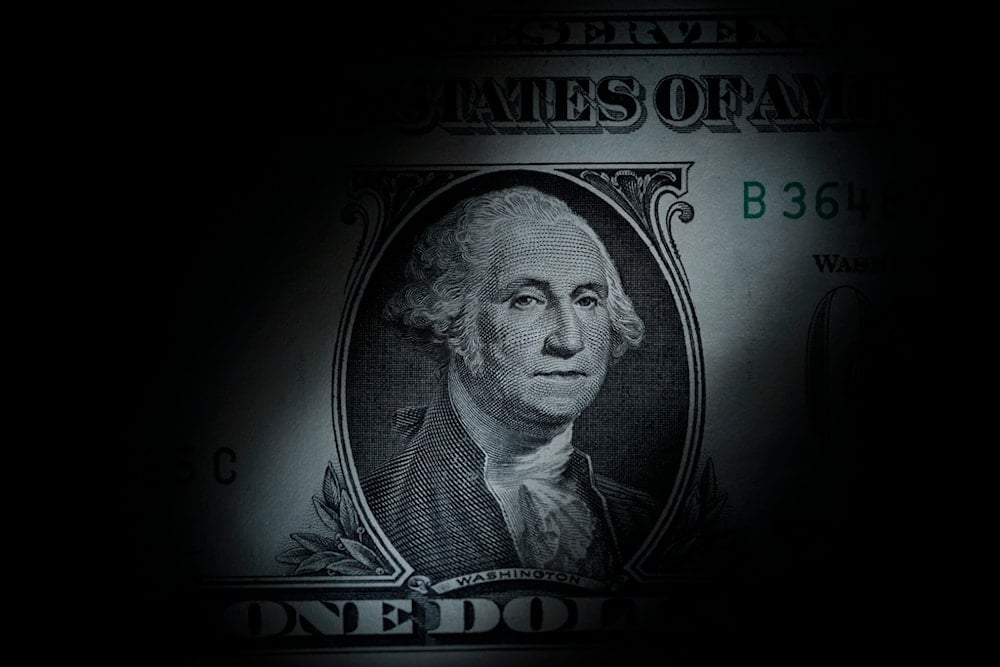Dollar slump masks investor unease in Trump 2.0 era: FT
A Financial Times op-ed warns that while US stocks are rallying under Trump's second term, the dollar’s steep decline and heavy investor hedging signal deep concerns about America’s economic credibility.
-

FILE - The likeness of George Washington is seen on a US one-dollar bill, March 13, 2023, in Marple Township, Pa., US (AP Photo/Matt Slocum, File)
An opinion piece published by writer Katie Martin for The Financial Times on Saturday examined the uneasy state of global markets under the Trump administration's second term, pointing to a striking divergence between soaring stock values and a battered US dollar.
Stocks Rally, but Anxiety Lingers
Martin noted that equities have managed to climb back to record levels after the tariff shock in early April, suggesting investors still view American companies, particularly technology firms, as prime destinations for capital. But she warned that this apparent strength conceals a deeper unease, as foreign investors are increasingly shielding themselves against the dollar's weakness.
According to Deutsche Bank strategist George Saravelos, "foreign investors are now removing dollar exposure at an unprecedented pace." Data show that more than 80 percent of inflows into US stock exchange-traded funds are now hedged, compared to nearly none at the start of the year. Similar shifts are evident in bond markets, where hedged positions account for roughly half of flows.
Dollar Takes the Strain
The dollar has dropped by more than 10 percent in 2025, its steepest fall in more than two decades. This slide is unfolding even as Wall Street rallies, underscoring that the problem lies not in confidence in US companies but in the currency itself.
At the same time, the Federal Reserve's policy trajectory is adding to investor unease. The central bank cut interest rates by a quarter of a point last week. However, a "dot plot" of future expectations revealed an outlier, widely assumed to be Trump appointee Stephen Miran, who advocated for a half-point cut and penciled in a further 1.25 percentage points in reductions this year. That would imply "seriously chunky crisis-style rate cuts," Martin observed, though she added Miran is unlikely to carry the majority.
Signal of Institutional Fragility
While a weaker dollar could, in theory, aid US manufacturing, Martin argued the trend is instead a warning sign about institutional fragility. "It is a grim signal that investors fear institutional damage in the US, with all the volatility and long-term economic cost that entails," she wrote.
The unease is mirrored in commodities, with gold breaking records amid a scramble for safe assets. Asset manager Robeco has gone as far as to assign a 35 percent probability to what it called an "exorbitant decay" of the global financial system, a "self-inflicted, preventable" unraveling led by the United States.
Read more: US dollar outlook: Short-term gains, long-term losses from tariffs
For Martin, the lesson is that the rally in stocks should not be mistaken for broad confidence. Behind the market's resilience, she said, lies deep anxiety about the trajectory of the world's largest economy and the stability of the system it anchors. "For now, the buck stops with the buck."

 3 Min Read
3 Min Read








